
Southwest Airlines (WN) has never been like its U.S. peers – not just for its low fares and open seating, but for the scale and reach of its domestic network. With more domestic flights than any other U.S. airline, Southwest dominates short to medium-haul markets, with a route network built on high-frequency service, secondary airports, and a peerless point-to-point model.
While network carriers like Delta and United rely on hub-and-spoke networks with deep international penetration, Southwest’s strength lies in connecting America’s busiest cities with relentless frequency and low fares.
As of early 2025, the carrier continues to operate with stunning frequency along key regional routes, from the booming Texas Triangle to the sun-soaked West Coast. Its busiest routes offer an insight into not just where Americans are traveling, but also how. Some are ultra-short commuter flights driven by business travelers and vacationers alike, while others link large cities across multiple states with high seat density and growing ASMs (Available Seat Miles).
A look at Southwest Airlines’ 30 busiest domestic routes reveals just how deep it is in key metro pairs—especially those focused in Texas, California, Nevada, and Florida.
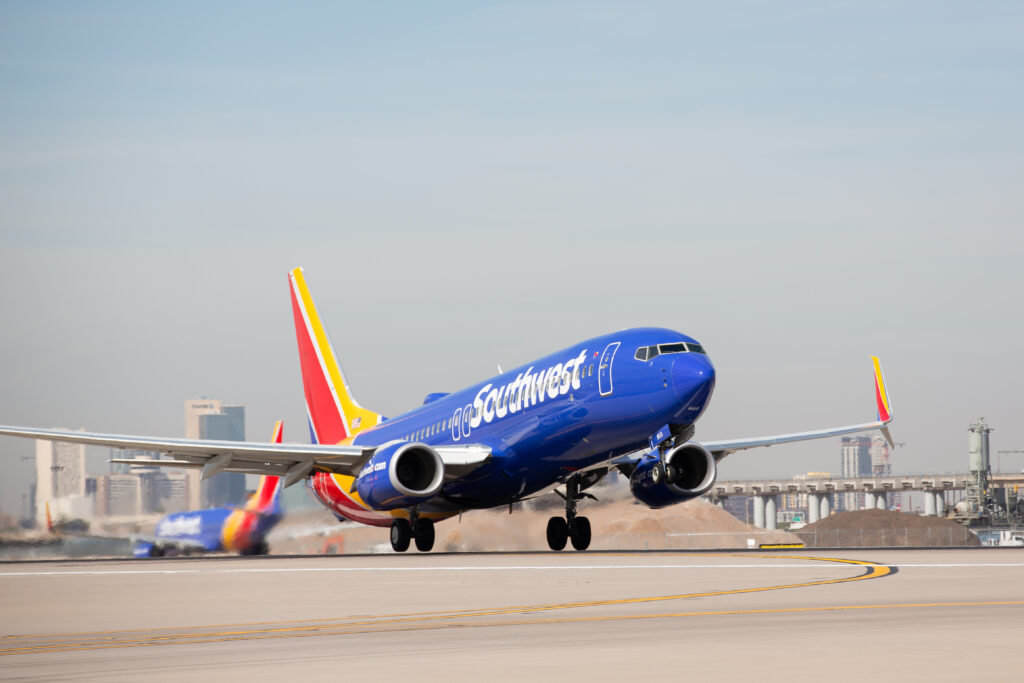 Photo: Southwest Airlines
Photo: Southwest Airlines Texas Triangle: The Long-Time Stronghold
Texas remains the beating heart of Southwest Airlines’ network, and the Dallas–Houston route is leading the way as the carrier’s busiest domestic route in 2025.
The Houston (HOU) – Dallas (DAL) shuttle continues to roll along with 2,058 flights, 320,918 seats, and nearly 77 million ASMs on the back of heavy business traffic, government links, and a strong base of repeat flyers.
These are Southwest’s two biggest Texas bases, and the route operates with such frequency that it’s virtually an air bridge between them.
These are complemented by other important Texas routes like Dallas–San Antonio (1,396 flights) and Dallas–Orlando (1,310 flights). These underscore Southwest’s deep penetration in short- and medium-haul Southern markets, offering high-frequency, low-fare travel between growing metro markets.
Together, these Texas and Southeast corridor intra-regional routes offer a steady stream of business passengers and VFR traffic, a segment where Southwest has reigned supreme for decades.
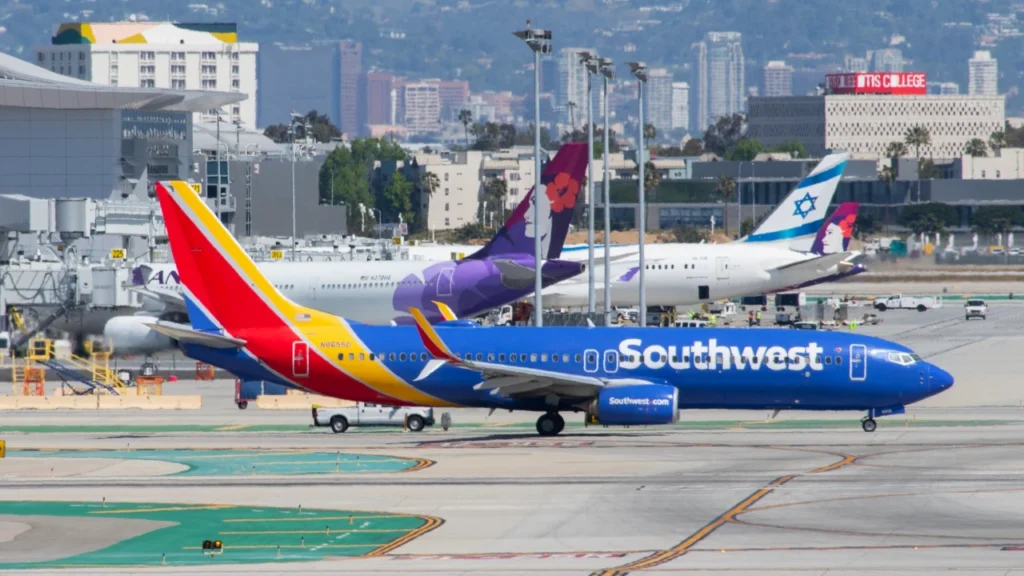 Photo: Aero Icarus | Flickr
Photo: Aero Icarus | FlickrLas Vegas: Leisure Central and a Key Network Hub
Southwest Airlines’ large Las Vegas (LAS) footprint is replicated in the figures of routes in this year’s top 30, reflecting the airport’s utility both as a point of leisure demand and as a connecting point.
The Phoenix–Las Vegas route, with 1,813 flights and 73.5 million ASMs, tops this list. While the route is short, the frequency and seat density underscore how core this corridor remains to Southwest’s Western network.
Some California itineraries, including San Diego–Las Vegas (1,786 flights), Sacramento–Las Vegas, and San Jose–Las Vegas, populate this list. All have well over 250,000 seats annually, serving dense tourist traffic and strong West Coast demand.
Las Vegas–based flights encompass a mix of inbound tourism and outbound vacationers, with Southwest prioritizing frequency over aircraft size. Las Vegas also has key links to other bases like Denver (1,617 flights, 166 million ASMs) and Los Angeles, further entrenching its core status.
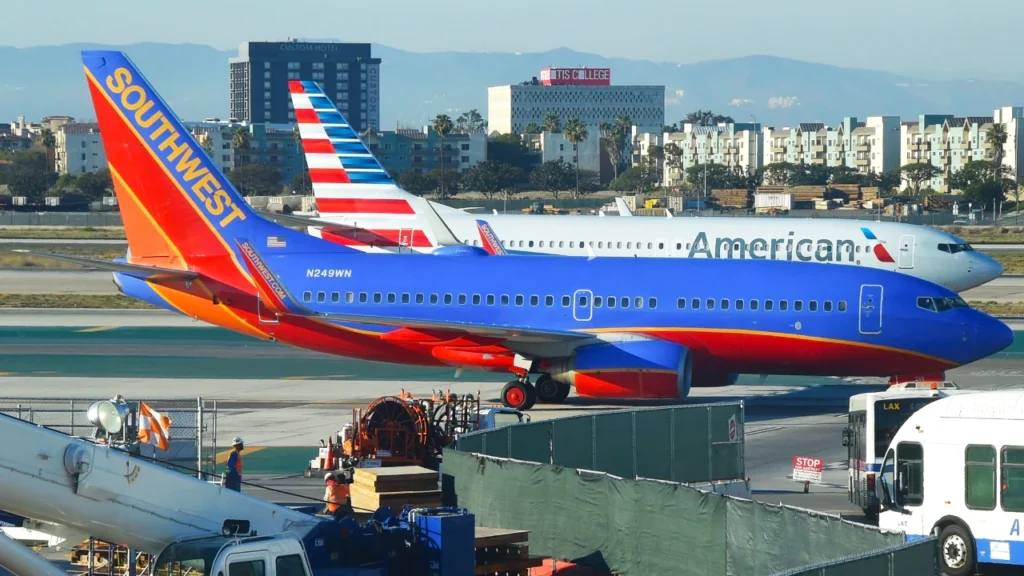 Photo: Aero Icarus | Flickr
Photo: Aero Icarus | FlickrCalifornia Intra-State Hub
Southwest continues to dominate intra-California routes in 2025, a holdover from when the airline offered unbeatable point-to-point service between Golden State cities.
The San Diego (SAN) flights to Sacramento (1,772 flights), San Jose (1,743 flights), and Phoenix (1,517 flights) all make it into the top 30, with over 200,000 seats each annually.
These links serve commuters, families, and visitors who prefer brief, frequent hops over long car rides or connecting flights.
Other major California corridors include Burbank–Oakland (1,462 flights) and Oakland–San Diego, on which Southwest can provide high frequencies and stable demand for several daily roundtrips.
Interestingly, the airline also operates a busy schedule between San Jose and Santa Ana (1,308 flights, 187,044 seats), reflecting its strength in both Northern and Southern California.
As a whole, these routes show Southwest’s commitment to linking communities outside of traditional LA or SFO hubs, staying true as a customer-friendly regional connector.
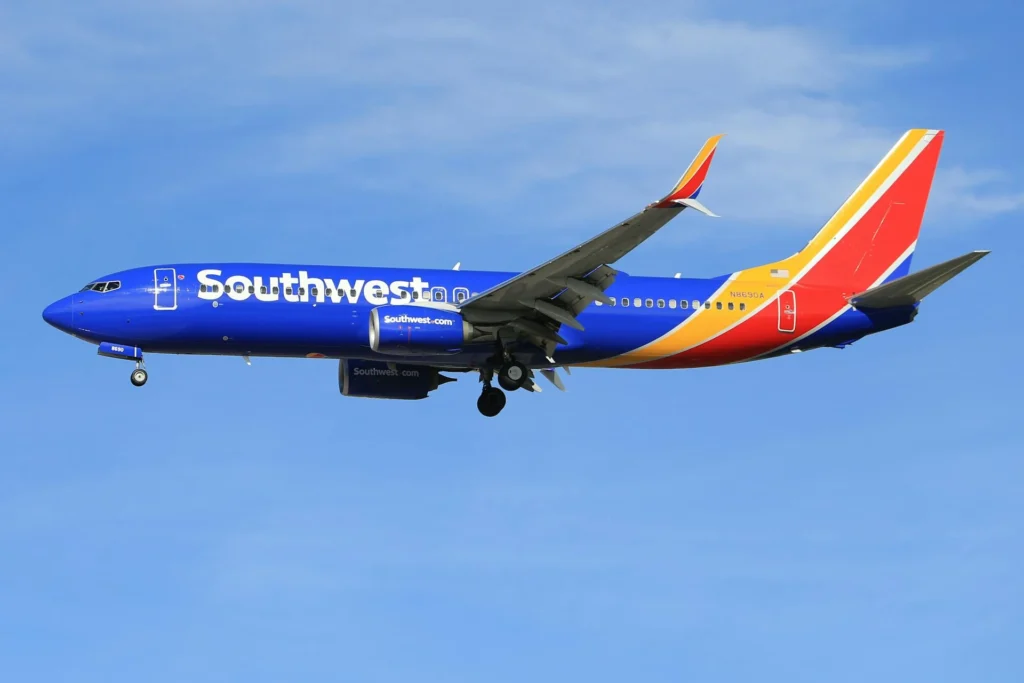 Photo: Jeffrey S.S | Pexels
Photo: Jeffrey S.S | PexelsDenver’s Increasing Strategic Significance
Denver International Airport (DEN) has become one of Southwest’s most valuable connecting hubs because of its mid-continent location and massive growth possibilities.
Denver–Phoenix is Southwest’s second-busiest domestic route in 2025 with 2,028 flights, 334,420 seats, and 201.3 million ASMs, reflecting very high demand for this critical desert corridor.
The Denver–Las Vegas route runs a close second, not only in terms of frequency but also in ASMs (166 million), a measure of its value as a short-to-medium-haul leisure and connecting operation.
Other Denver Southwest high-performing routes include Denver–Dallas (1,552 flights) and Denver–Salt Lake City (1,239 flights). These markets demonstrate Southwest’s dual strategy of building connecting traffic along with pursuing underserved or high-potential markets.
DEN’s centrality allows it to balance East-West flows and provide customers with a broad selection of one-stop travel options across the country. With Southwest adding capacity and gates at Denver, expect its footprint here to grow even further.
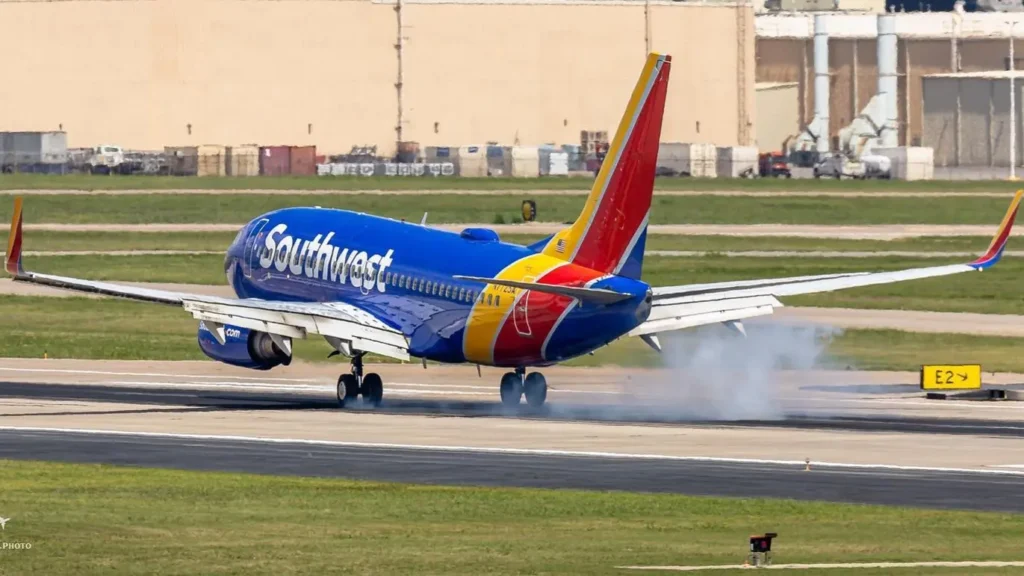 Photo: Cado Photo
Photo: Cado PhotoFlorida and the East Coast Connection
Florida continues to be a lucrative market for Southwest, especially in the Northeast–Sun Belt routes. The most active route in the region is Baltimore (BWI) – Orlando (MCO) with 1,860 flights, 303,996 seats, and a whopping 239 million ASMs—one of the largest leisure-oriented routes in the network.
Supporting this are BWI–Tampa and FLL–BWI, both of which rank in the top 30 and carry both vacationers and visiting friends and relatives (VFR) traffic.
Meanwhile, Orlando serves as a gateway to the Midwest via high-volume routes such as Orlando–Chicago Midway (1,225 flights) and MCO–DAL, which offer nearly 208.7 million ASMs on their own.
The intersection of East Coast density and home travel demand allows Southwest to keep these routes year-round, with additional lifts over holidays and school vacations.
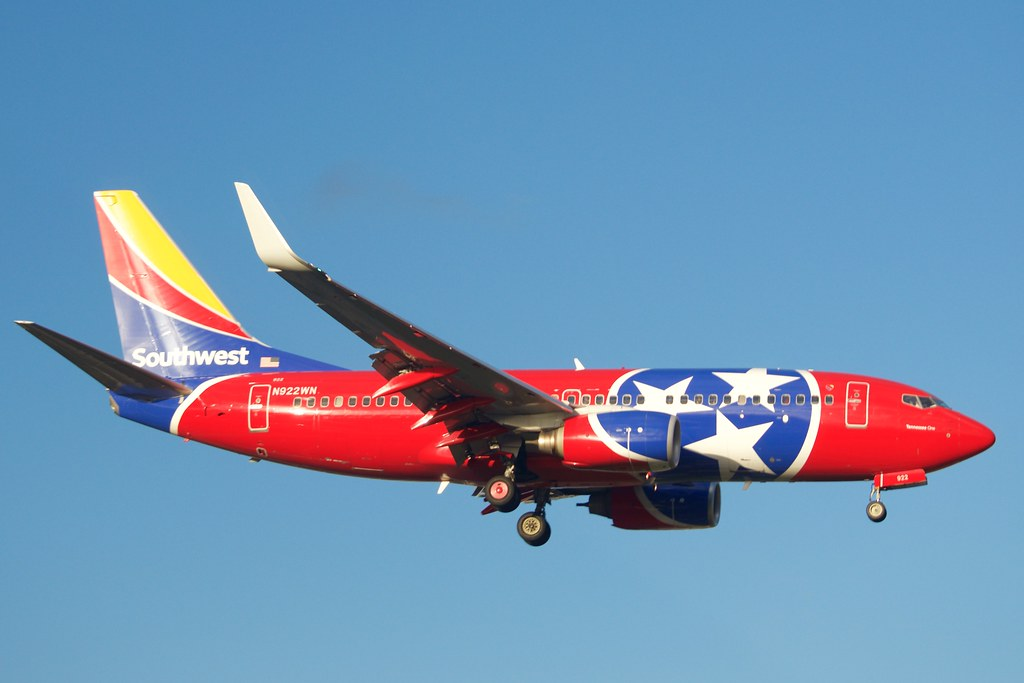 Photo: Southwest Airlines Boeing 737 N922WN Tennessee State speci… | Flickr | Creator: Bill Abbott
Photo: Southwest Airlines Boeing 737 N922WN Tennessee State speci… | Flickr | Creator: Bill AbbottMidway: The Legacy Midwest Anchor
Chicago Midway (MDW) remains one of Southwest’s cornerstone airports, anchoring many of its most important East–West connections. MDW–Phoenix stands out with 1,298 flights, 214,670 seats, and a massive 310 million ASMs, the highest ASM total of all 30 routes. This illustrates how Southwest uses Midway to connect business centers and Western leisure spots efficiently.
In addition, MDW–Orlando and Orlando–MDW are both within the top 30, reflecting strong two-way demand that holds up regardless of time of year. Chicago is also important in offering one-stop access to the West Coast and Southwest, so Midway is a long-term plus for the network.
A notable inclusion in the list is Honolulu (HNL) – Kahului (OGG), an inter-island route with 1,956 monthly flights, 342,300 seats, and a comparatively low 34.5 million ASMs due to its short distance.
Despite that, the frequency underscores just how competitive Southwest has become in Hawaii’s inter-island market, traditionally dominated by Hawaiian Airlines. By using its Boeing 737 fleet to compete on frequency and price, Southwest has successfully inserted itself into this regional market.
| Rank | Route | Flights | Seats | ASMs |
| 1 | Houston (HOU) – Dallas (DAL) | 2,058 | 320,918 | 76,699,402 |
| 2 | Denver (DEN) – Phoenix (PHX) | 2,028 | 334,420 | 201,320,840 |
| 3 | Honolulu (HNL) – Kahului (OGG) | 1,956 | 342,300 | 34,572,300 |
| 4 | Baltimore (BWI) – Orlando (MCO) | 1,860 | 303,996 | 239,244,852 |
| 5 | Phoenix (PHX) – Las Vegas (LAS) | 1,813 | 287,131 | 73,505,536 |
| 6 | San Diego (SAN) – Las Vegas (LAS) | 1,786 | 277,894 | 71,696,652 |
| 7 | San Diego (SAN) – Sacramento (SMF) | 1,772 | 269,844 | 129,525,120 |
| 8 | San Diego (SAN) – San Jose (SJC) | 1,743 | 260,673 | 108,700,641 |
| 9 | Las Vegas (LAS) – Sacramento (SMF) | 1,663 | 266,993 | 105,996,221 |
| 10 | Denver (DEN) – Las Vegas (LAS) | 1,617 | 264,159 | 166,156,011 |
| 11 | Las Vegas (LAS) – Oakland (OAK) | 1,603 | 263,821 | 107,375,147 |
| 12 | Las Vegas (LAS) – San Jose (SJC) | 1,582 | 257,202 | 99,279,972 |
| 13 | Denver (DEN) – Dallas (DAL) | 1,552 | 250,832 | 163,040,800 |
| 14 | Las Vegas (LAS) – Reno (RNO) | 1,551 | 244,833 | 84,467,385 |
| 15 | Dallas (DAL) – Phoenix (PHX) | 1,538 | 251,454 | 221,028,066 |
| 16 | San Diego (SAN) – Phoenix (PHX) | 1,517 | 229,091 | 69,643,664 |
| 17 | Burbank (BUR) – Oakland (OAK) | 1,462 | 209,066 | 67,946,450 |
| 18 | San Antonio (SAT) – Dallas (DAL) | 1,396 | 218,732 | 54,245,536 |
| 19 | Oakland (OAK) – San Diego (SAN) | 1,390 | 212,530 | 94,788,380 |
| 20 | Orlando (MCO) – Dallas (DAL) | 1,310 | 214,722 | 208,709,784 |
| 21 | San Jose (SJC) – Santa Ana (SNA) | 1,308 | 187,044 | 63,969,048 |
| 22 | Chicago (MDW) – Phoenix (PHX) | 1,298 | 214,670 | 309,983,480 |
| 23 | Fort Lauderdale (FLL) – Baltimore (BWI) | 1,263 | 200,673 | 185,622,525 |
| 24 | Sacramento (SMF) – Burbank (BUR) | 1,262 | 180,466 | 64,606,828 |
| 25 | Los Angeles (LAX) – Las Vegas (LAS) | 1,242 | 203,046 | 47,918,856 |
| 26 | Denver (DEN) – Salt Lake City (SLC) | 1,239 | 206,681 | 80,812,271 |
| 27 | Chicago (MDW) – Orlando (MCO) | 1,225 | 206,384 | 204,113,776 |
| 28 | Baltimore (BWI) – Tampa (TPA) | 1,225 | 194,183 | 163,502,086 |
| 29 | Orlando (MCO) – Chicago (MDW) | 1,218 | 205,671 | 203,408,619 |
| 30 | New Orleans (MSY) – Dallas (DAL) | 1,205 | 196,667 | 85,943,479 |
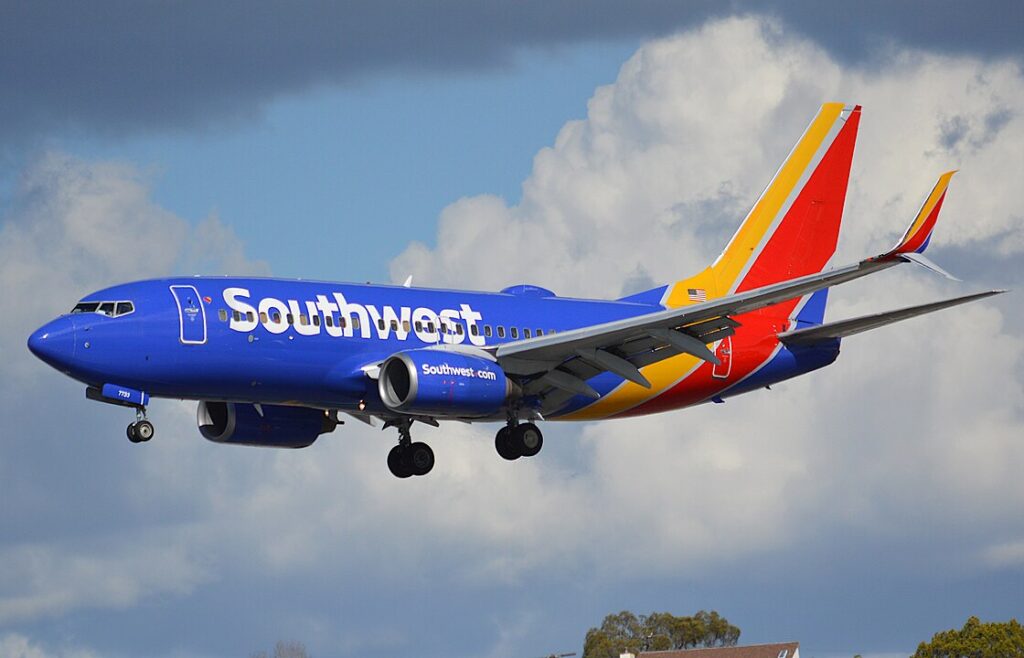 Photo: By Johnnyw3 – Own work, CC BY-SA 4.0, https://commons.wikimedia.org/w/index.php?curid=76774657
Photo: By Johnnyw3 – Own work, CC BY-SA 4.0, https://commons.wikimedia.org/w/index.php?curid=76774657Bottom Line
Southwest Airlines’ top 30 busiest domestic routes in 2025 illustrate the carrier’s continued dominance in short- to medium-haul flying, underpinned by a frequency, network simplicity, and market familiarity strategy.
Whether connecting Texas business hubs, blanketing California’s coastal corridor, or tying Las Vegas and Denver to major leisure points, Southwest’s route network demonstrates a strategic balance between demand-driven expansion and operational consistency.
Stay tuned with us. Further, follow us on social media for the latest updates.
Join us on Telegram Group for the Latest Aviation Updates. Subsequently, follow us on Google News
Data Sourced from Cirium Diio
Southwest Airlines Top 20 Busiest International Routes
The post Southwest Airlines Top 30 Busiest Domestic Routes in 2025 appeared first on Aviation A2Z.


















